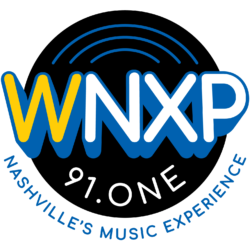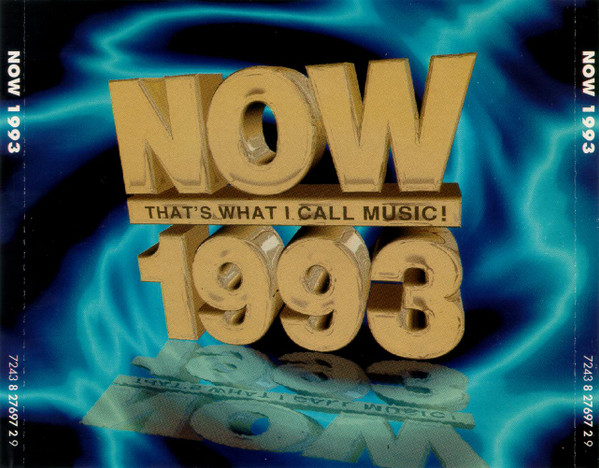This week we are going back in time for our Record(s) of the Week. Because of our ’90s themed Spring Fund Drive coming up, WNXP hosts have chosen our favorite records from 1993. For some musical context, the song that spent the most time at the top of the Billboard charts in 1993 was “I Will Always Love You” by Whitney Houston. Mariah Carey’s Music Box sold 30 million copies, more than any other record in 1993. And there were seminal releases that year from Snoop Dogg, Liz Phair, Bikini Kill, Radiohead, Nirvana, De La Soul and Pearl Jam. Those are just some of the of records that didn’t make our list. Here are the ones that did.
Celia Gregory: Janet Jackson’s Janet.
Janet Jackson’s 1993 record called Janet. was a reintroduction to the world famous kid sister singer-dancer as a grown woman. Janet was NOT subtle — from her half-naked, artfully concealed cover photo, to lyrics describing desire and verrry intimate times (sung as sultry as the FCC would allow, with intermittent moaning 😳) to music videos with banging but blush-worthy choreography.
“That’s the Way Love Goes” and “If” are standout tracks memorable for their commercial radio reign in the era of sexy R&B and guitar music running neck and neck. But Janet. dabbled around musically, like on the most saccharine piano ballad “Again” to the dark kiss-off tune “This Time” and on the house music head-bobber “Throb.” Erotic themes run throughout, themes I clearly didn’t grasp in real time as an 8-year-old in Kentucky but I can appreciate now.
Janet. was a statement, a smash hit, a 75-minute masterpiece. And as a reminder, queen Janet still reigns and stops through Nashville on a world tour come May 4 at Bridgestone Arena.
Justin Barney: Crash Test Dummies’ God Shuffled His Feet
The musical hill that I will die on is that God Shuffled His Feet by Crash Test Dummies is the best album of 1993 and one of the greatest albums of all time.
It is an album of biblical portions. Singer and songwriter Brad Roberts is interested in taking on big, serious answers by asking silly little questions. Like, “How does a duck tell his wife from all the other ducks?” and “Do you have to get your hair cut in heaven?” Roberts does so with a totally flat baritone that rounds off the joke into a sonorous late night ponder. The backing band adds mandolin, accordion and backing vocals that pull out the idea that even musically, the album is full of Renaissance ideas. There is a through line from Plato to DiVinci to Roberts.
For an album so bursting with ideas, jokes and questions, maybe its greatest joke — and the best embodiment of Roberts as the man without the answers — is that the title of its major hit must be said with your mouth completely closed: “Mmmm mmmm mmmm mmmm.”
Emily Young: Tool’s Undertow
Admittedly, I was a mere infant in 1993. But as I grew older, music from the early ’90s shaped my taste that still exists today. Specifically, the darker sounds of grunge and metal.
Tool’s debut full-length Undertow sounded unlike anything else at the time, but the band’s influence on music can be heard even decades later. Maybe the country was beginning to grow accustomed to darker subject matter, thanks in large part to the evolution of grunge music. But Tool took that darkness to new depths — sonically, lyrically and visually. Led by frontman Maynard James Keenan, the band was driven by experimentation, not musical trends. It was artsy, it was riffy, and most importantly, it was heavy.
While Undertow paved the way for a new era of prog metal, Tool’s genre is still impossible to define. The album wasn’t just big among metal heads and alt-rock fans, it rose to mainstream popularity, selling millions of copies and even charting on the Billboard 200. And now, 30 years later, Tool continues their legacy and sounds as innovative as they did in 1993.
Jason Moon Wilkins: Björk’s Debut
It was a hard choice. 1993 was a great year for music and personally meaningful. I moved to Nashville in 1993 and those albums were the soundtrack to that life-changing decision. I almost chose one of the most criminally underrated records of the era — American Music Club’s Mercury — but since we had to choose just one, I went with a singular talent.
The first indication that Björk was bound for greatness was “Birthday,” the otherworldly college radio hit from her Icelandic band The Sugarcubes. But she solidified her legacy as a true original with boundless potential on Debut, her first solo album. Its first single “Human Behavior” built on “Birthday” but carved its own sonic signature. It was alien and percussive with a haunting melody and a distinctive vocal delivery that called like the sirens above the din of grunge wannabes emerging in a post Nirvana world.
While some music from that era sounds hopelessly dated or sweetly nostalgic, Debut could have come out this week and people still would be asking with curious desire, “What is that?”
Marquis Munson: Wu-Tang Clan’s Enter the Wu-Tang (36 Chambers)
The year 1993 was a big year for hip hop. Digable Planets, performing at Brooklyn Bowl on May 9, released their debut album, Reachin’ (A New Refutation of Time and Space.) A Tribe Called Quest released their third album Midnight Marauders. Fellow Native Tongue members De La Soul also released their album Buhloone Mindstate. Being from California around this time, I have to mention Snoop Dogg’s debut album Doggystyle.
But my favorite record from 1993 was the debut album from Wu-Tang Clan, Enter the Wu-Tang (36 Chambers), released November 9, 1993, the same day as Midnight Marauders. This was a perfect introduction to the New York hip hop collective (I won’t name all the members, but I can). The production from RZA was groundbreaking, using samples from James Brown to Kung-Fu movies they watched during the making of it. The lyrics from each individual member were raw but they all brought something different, especially Ol’ Dirty Bastard.
This album from Wu-Tang Clan holds also holds a special place in my heart because it was the first concert I attended when I moved to Nashville in 2019. Wu-Tang Clan performed this entire album at the Ryman Auditorium, the first hip hop shows at the historic venue. They’re coming back to Nashville on September 20 at Bridgestone Arena alongside the legendary Nas, who released his debut album a few months after Enter the Wu-Tang. I’m sure they will “Bring the Ruckus,” so get your cream in order.
Dan Digs: A Tribe Called Quest’s Midnight Marauders
If we’re time-traveling back to the year 1993, if we’re talking about the best music from that year, and if I have to pick one album to highlight, then it has to be (it has to be!) Midnight Marauders, the third studio album by Q-Tip, Phife Dawg, and Ali Shaheed Muhammad, otherwise known as A Tribe Called Quest.
Gritty yet smooth, loose yet precise, serious yet fun, not only does Midnight Marauders showcase the best of A Tribe Called Quest’s production aesthetic and expertise in trading bars, it also invites the listener into the group’s relaxed and easygoing camaraderie as Phife and Tip relay everyday stories and crack jokes. It is, before anything else, a fun hang.
With jazz, soul and funk sample sources ranging from Milt Jackson to Ramsey Lewis to Minnie Riperton to James Brown, the album is a masterclass in the art of crate-digging alchemy to find that ideal hook, beat, and riff that, when repeated, catalyzes and transforms the music into something far greater than the sum of its parts, something vital, something timeless. There’s a reason Midnight Marauders is rightfully lauded as one of the greatest hip-hop albums of all time; for this particular group and for the genre in general, it rarely gets any better than this.
Aaron Monty: Smashing Pumpkins’ Siamese Dream
I still remember ripping the cellophane off the Siamese Dream CD when I bought it. It was a sunny day in El Paso, Texas and I was a mere 11 years old. The sun seemed to be as bright as the lighting in the “Today” video, like the colors were about to invert. My world did turn upside down and inward after hearing this album for the first time. It became my go-to album for expressing my teen angst and I learned every single lyric. From the first angry riff of “Cherub Rock” to the lullabied last chords of “Luna,” Siamese Dream was played in its entirety so many times and so regularly that I even bought a back-up copy in case the CD got scratched. My favorite song is “Mayonaise,” one of the two songs on the album co written with James Iha and not solely by Billy Corgan.
Take a listen and imagine yourself yearning the lyric “Can anybody hear me?” and know that some of us out here definitely do.

